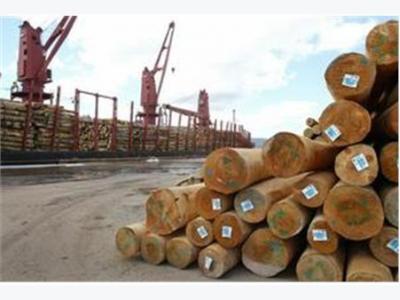Lack of timber threatens wood industry

Ensuring timber supply for domestic manufacturing is a problem in Viet Nam as a large amount of raw timber is exported. — Photo chinhphu.gov.vn
The wood processing industry faces a lot of difficulties in the future following the government’s order close natural forest gates from January 1.
This was stated by Bui Chinh Nghia, deputy head of the Ministry of Agriculture and Rural Development’s (MARD) Forestry Department.
Nghia said this would result in a cut of some 40,000 cu.m. of raw material this year.
Ensuring timber supply for domestic manufacturing is a problem in Viet Nam as a large amount of raw timber is exported despite many domestic producers lacking raw material.
To have enough material for processing and exports, many businesses have proposed that the government prohibit the export of raw material to other countries.
If the quantity of exported wood is retained in the country, it would help local businesses take the initiative in signing orders with their partners in Europe and the United States.
Sharing his opinion on this proposal, Huynh Kim Bau, assistant to the director of Saigon Furniture Co. Ltd, said the government should levy a tariff of 30-35 per cent on raw timber exports, the same level as applied by some regional countries, such as Cambodia and Thailand, to lower exports. In addition, enterprises need to plant high-quality tree species that grow in a short period of time to meet the industry’s increasing demand.
Huynh Van Hanh, deputy chairman of the Handicraft and Wood Industry Association of HCM City, said small- and medium-sized enterprises (SMEs) needed to co-operate with each other if they wanted to compete with foreign firms globally.
The association should make decisions based on three criteria -- they are in real need of co-operation with other, they should trust their partners, and their rights and interests should be based on fairness as the work will be divided equally based on production and supply for each participant.
As for those enterprises which are capable of expanding their business, they should invest in advanced technology to raise capacity and quality to overcome difficulties and access large orders.
Hanh said Viet Nam had more than 4,000 timber processing and export businesses but only seven per cent of them were large and could easily access huge orders from clients from the United States, Japan and the European Union. The remainder, which was small and medium enterprises, had weak competition capacity and small investment capital, hence they faced more difficulties while seeking orders.
Meanwhile, the number of foreign investment businesses in the country was few, but they retained more than 50 per cent of the market share. Vietnamese SMEs mostly did outsourcing work of foreign investment businesses.
Duong Phuong Thao, deputy director of the Import-Export Department under the Ministry of Industry and Trade, said Viet Nam exported processed wood worth US$7 billion in 2016, while global demand stood at $400 billion for wood products. Viet Nam’s wood industry, he said, must grow further to capitalise on the huge global demand.
In 2017, MARD will switch the use of 200,000ha under small tree forests to growing large trees and issue sustainable forest certificate to those land areas. The total area under large trees granted sustainable forest certificates is expected to reach 500,000ha by 2020, promising a high-quality and certified source of timber for processing and exporting.
Thao added that the Vietnamese Government planned to negotiate with its Lao and Cambodian counterparts to create better conditions for Vietnamese firms to source timber from forests in these countries to increase the supply of raw material.
The local wood industry uses 30 million cu.m. of raw timber for manufacturing every year and has shipped products to more than 100 countries and territories. Only two-thirds of the timber is sourced domestically while the rest has to be imported
Có thể bạn quan tâm
 Viet Nam rice exports set to face another tough year
Viet Nam rice exports set to face another tough year Despite facing difficulties, Viet Nam will strive to achieve rice exports of more than 5 million tonnes this year, the Viet Nam Food Association has said.
 Japan helps Lam Dong become an hi-tech agriculture hub
Japan helps Lam Dong become an hi-tech agriculture hub A comprehensive agriculture development project with multiple approaches including agri-tourism has delivered promising results in Lam Dong Province
 Agriculture ministry working on plans to attract FDI
Agriculture ministry working on plans to attract FDI Co-operation between producers and companies is necessary to develop agriculture and to attract more investment in the sector, Nguyen Xuan Cuong has said